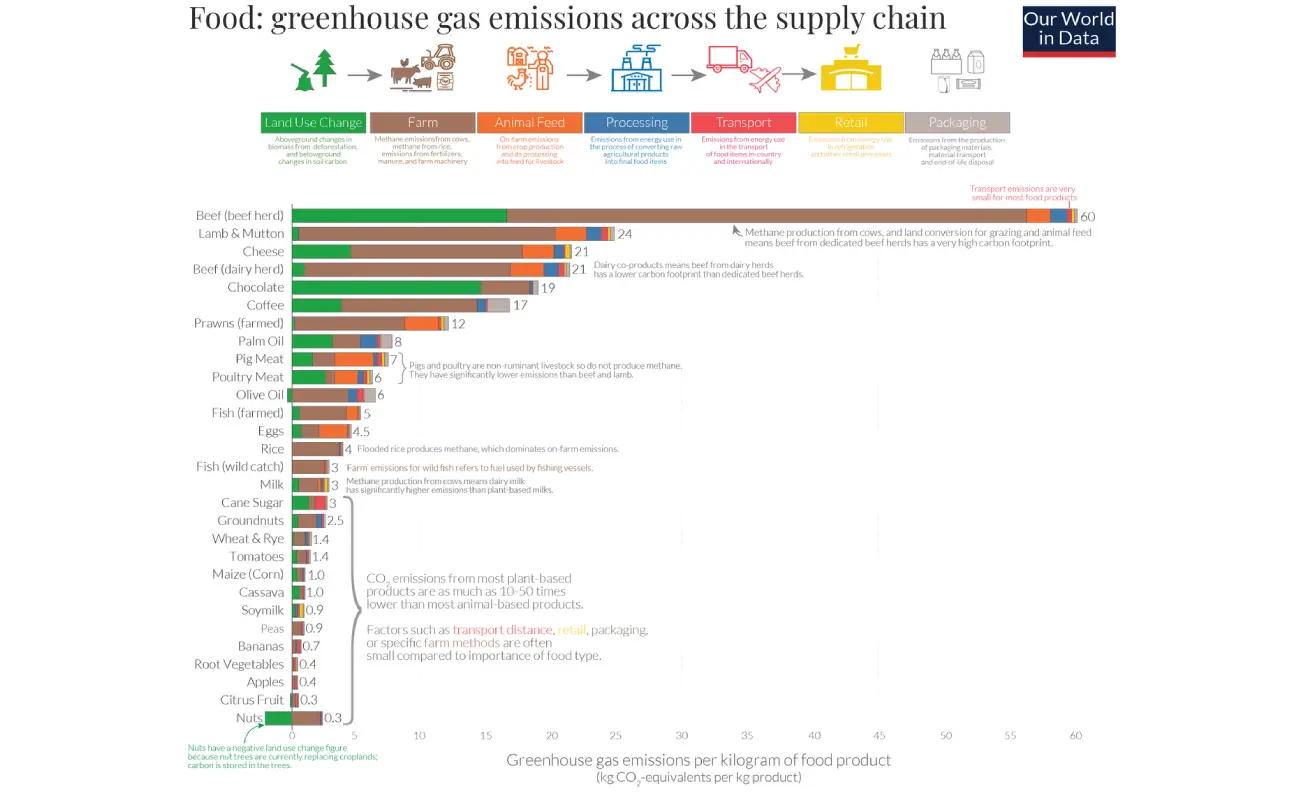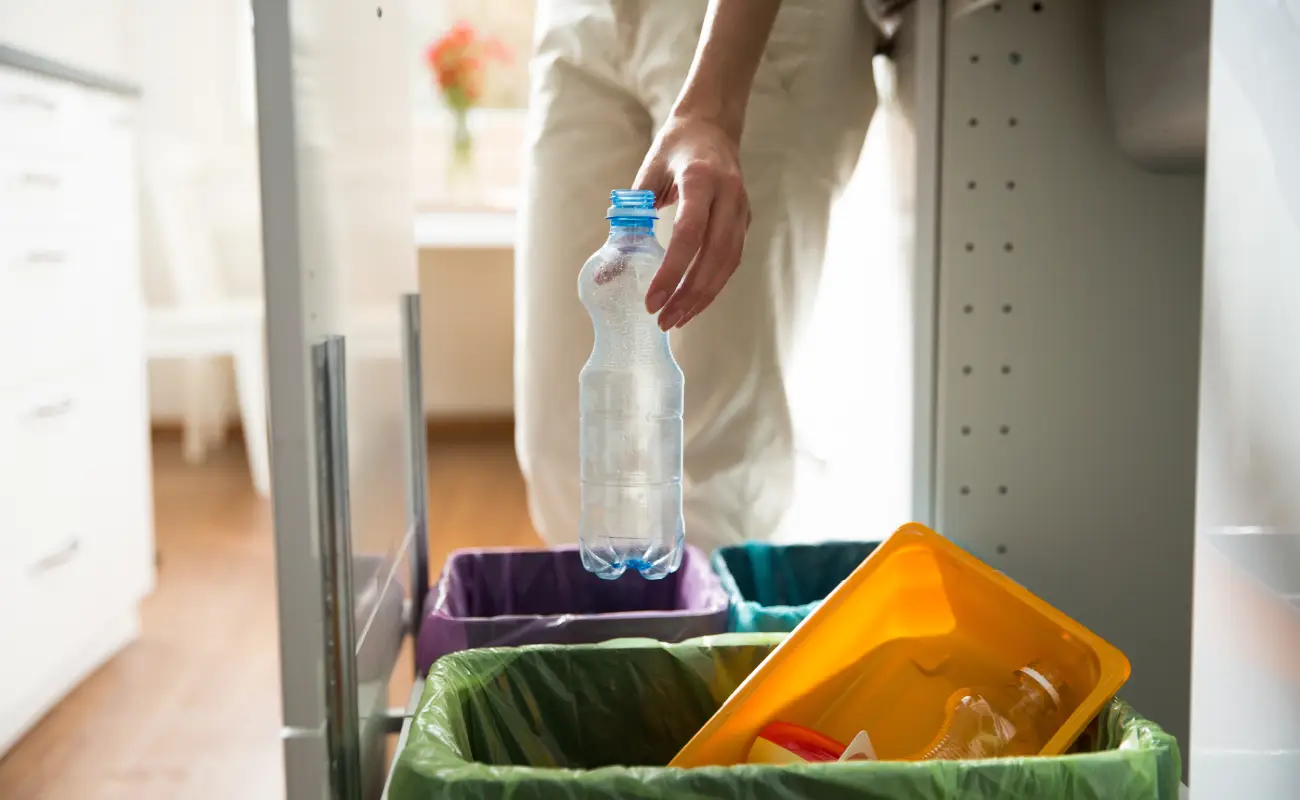Allow us to continue the analogy between a carbon budget and a regular budget.
When you are forced to cut the costs of your household by 10, you start with the highest expenses. You move to another place or switch cars before looking at smaller expenses.
You think the best actions you can take are recycling, reducing packages, and eating local meat? Think again.
According to many studies, people on average underestimate the most impactful climate actions they can take and overestimate the least impactful ones. Let’s try to fix this misperception
When it comes to your carbon footprint, the top contributors will depend on your lifestyle. We listed below the top contributors to your carbon footprint: Acting on them could make you save literally tons of CO2 emissions per year.
1.Travels

If you live in the UAE, you probably travel several times per year back home or for business. The footprint of a Dubai-London round-trip in economy is approximately 1.5T of CO2. Yes, that’s your yearly carbon allowance. We have the chance to live in a beautiful country; consider staycations or short trips for your next holidays to help save carbon emissions.
2. Car

Road transport is one of the major causes of environmental pollution, and it is considered to be responsible for about 30% of the total emissions of CO2 into the atmosphere.
To reduce your footprint: drive smaller, drive less, drive slower.
Drive smaller
Size matters! On average globally, a small car such as this can emit up to 3.4 times less than a big SUV. If you drive 20,000 km per year, that means an easy way to save 6 tons of CO2 a year and to cut your fuel costs is to switch to a smaller car. (source)
Drive less
Whenever you can, working from home, walking, or biking is the winning option and comes with many other benefits, such as lower local air pollution and better health.
And if you want to ride in style, we can help you with that: not owning a car is probably the best way to save on CO2 emissions (and bills), as you can save up to 6 tons per year!
Drive slower
Driving at 120 km/h burns 20% more fuel than driving at 100 km/h. (source).
What about electric vehicles?
Electric vehicles emit less than petrol or diesel cars, even in countries where the electricity mix is fairly high carbon. However, what is true for regular cars is also true for electric cars: driving lighter cars, driving less, and driving slower will use less energy, which will end up in a reduced footprint if your electric grid is powered by fossil fuels.
3. Food

This one can be counter-intuitive: did you know a local egg has a bigger carbon footprint than a banana that travelled 10,000 km?
Your carbon footprint is more about what you eat than where your food comes from red meat has the highest carbon, water, and land footprint. A 110g beef burger has about a 10kg CO2 footprint. To put it in perspective, eating one burger per day during a week has the same carbon footprint as a brand-new iPhone: circa 70 kg of CO2.
When it comes to food, plant-based diets win the game of sustainability in all categories: carbon emissions, water footprint, and land use.

(Source)
A plant-based diet will save you 1 to 2 tons of CO2 per year. So, what about starting with some meat-free days? If you need some yummy inspirations, check out Ella's Plant-Based Cookbook.
4. House

Aircon gases are considered “super greenhouse gases” as they are 140 to 11,700 times more potent than CO2 (source).
If you have the chance to, insulate your house to save on your energy bill and CO2 budget. You can also reduce the air conditioning: setting it at 22°C instead of 19°C leads to a 40% reduction in electricity use (source).
Smart house appliances can also help you reduce your energy bill and cut your CO2 emissions by using the AC only when you really need it.
5. What About Plastic and Recycling?

Surprised not to find plastic or recycling in this list? While limiting plastic and recycling is good for many reasons, especially to preserve biodiversity and the oceans, when it comes to global warming, they are not at the at the top of the list.
For the above categories we mentioned, we are talking about saving tons of CO2eq. emissions. Limiting plastic, recycling, watching Netflix in low-res, and using reusable straws will have an impact, of course, but the scale will be kilograms, not tons.
In general, recycling should come after reducing, repairing, and refurbishing. So, if your phone screen is broken, repair it! We've got you covered with hassle-free Fixsquad repair services. It will save you money and CO2 emissions.
Also, you can benefit from our trade-in service! All you have to do is provide us with your product's details and book a home pick-up or visit the nearest Virgin Megastore.
In conclusion, a carbon budget is like any budget: if you want to fight against climate change, focus on reducing your biggest spendings.



